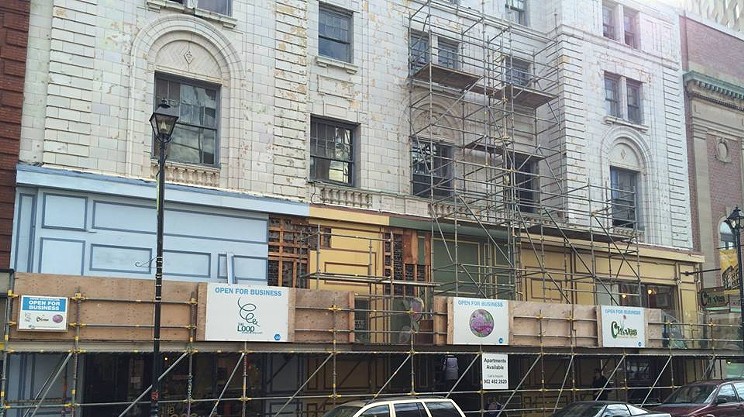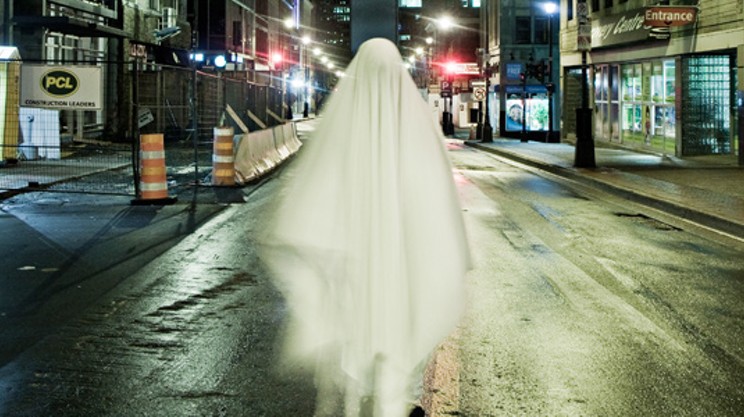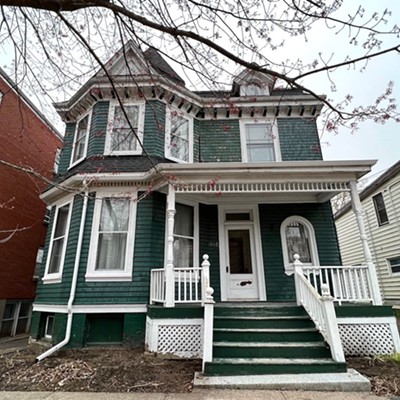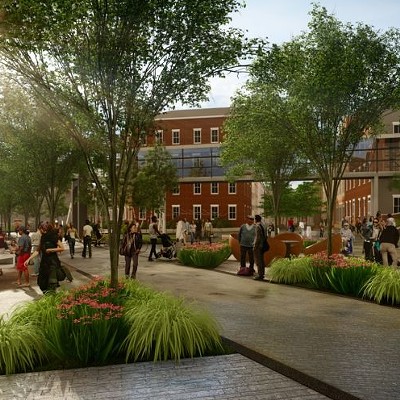In the TD bank at the corner of Spring Garden Road and Birmingham Street, there is a mural-sized photograph of nearby Barrington Street, taken on a warm spring day in 1944. It shows sidewalks crowded with civilians, uniformed CWACs and soldiers on leave. Bright red trolleys roll amongst the cars, flags and awnings hang above dozens of storefronts, and the marquee of the Capitol Theatre is visible in the background.
A small poster of the image also hangs in my shop on Barrington, and people often ask me about it. I explain that it shows the very block we are on, and that if they were passing The Pacific building—in which my store is located—on that day in 1944, they might have been in the photo too. Many people are surprised, since that street lined with shops and restaurants is largely at odds with the current perception of Barrington. But the street’s historical connection to small retail business remains embodied in its design and architecture: in the modest scale of so many of its storefronts, its broad sidewalks and its impracticality for receiving goods in anything but small shipments.
There has been much reflection among planners, business advocates and city politicians upon the causes of Barrington’s decline, and about what can be done to revive it: historical designation, residential/commercial development, the enticement of major retailers. Just wait, we are told, once this or that thing is done, it will be better. There’s no denying that once the cranes and scaffolding are gone, there will be some kind of improvement. But after a decade as a business-owner on Barrington, I’ve grown to share the opinion I hear most often from my customers: that Barrington’s empty storefronts are, at this point, more a cause of its woes than a symptom.
Yet the sensible question of WHY so many Barrington storefronts are empty is actually rarely addressed. While some spaces are unavailable due to construction or poor condition, many are for lease, and have been for a very long time. Is there really no demand for these spaces? Doesn’t anyone want to open a shop downtown? All those “for lease” signs make it seem that way, but I think you and I know that isn’t the case. I’ve spoken to many retail entrepreneurs who would love a Barrington Street location. But the rents are just too high. If those spaces were affordable for the types of business to which they are most suited, they would be occupied.
But to anyone with an understanding of basic economics, even that explanation will seem incomplete. If something is priced beyond what anyone who wants it can or will pay, isn’t it common sense to lower its price to the level at which it will sell? After all, if you aren’t making money on something, you’re losing money on it, because holding inventory or property costs money. These concepts are fundamental to all types of business—except, it would seem, commercial real estate in Halifax.
I don’t doubt the business acumen of the property owners, so I suspect that there is a reason for which it makes sense to keep these spaces vacant, rather than lease them at a lower price. I would like to know that reason. And I’ll bet you would too. And until that reason is made clear, and addressed, Barrington Street will never be what it was designed to be: a home for small business.






















